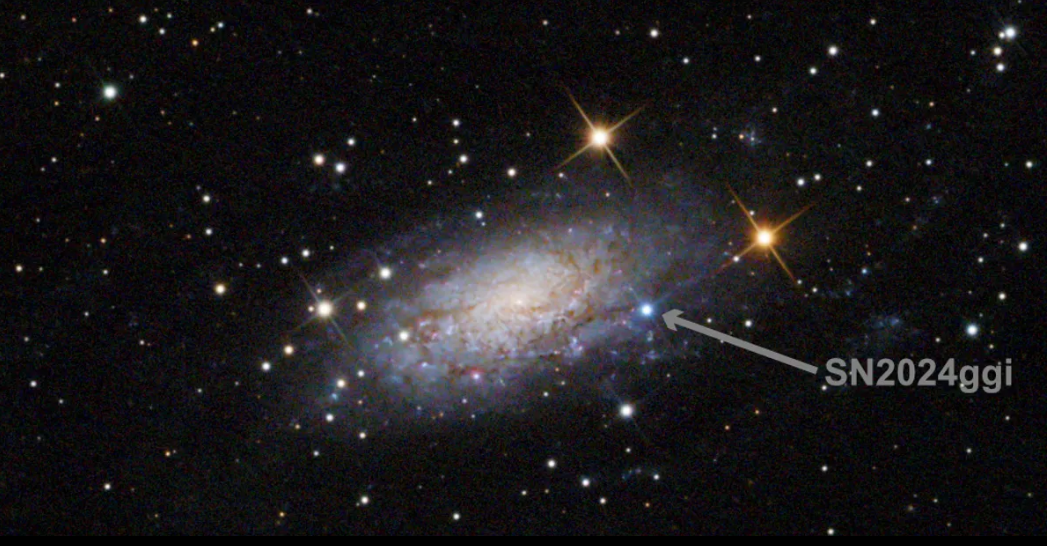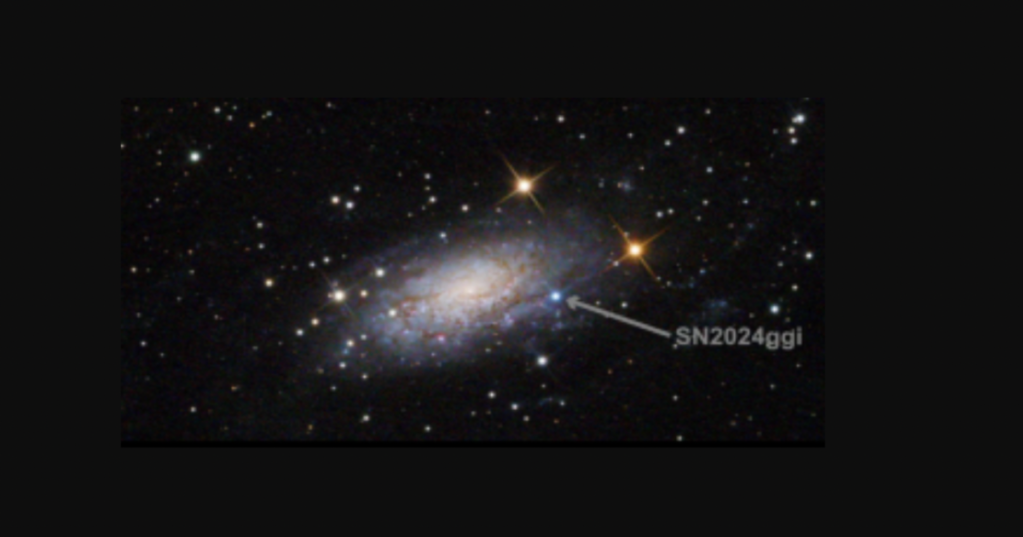
When a star nears its final phase, it experiences an incredible explosion that can generate more light and energy than our Sun will in its entire lifetime.
This process is known as a supernova, and while it only happens once per star, since there are a lot of stars out there so they are not that uncommon. Catching one that is close enough to Earth to be seen with a normal telescope is much rarer, but that is exactly what happened recently.
Amateur astronomer Duncan Milburn was in Australia looking up into the sky through his telescope when he saw something incredible.
A light from a (relatively) nearby galaxy that was much brighter than its surroundings. After further investigation and research, it was determined that he was the first person to capture this incredible event.
The supernova is located in a galaxy known as “NGC 3621,” and has been named “SN2024ggi.” It is located approximately 22 million light-years away.
While it is clear that the scientific community needs to put a little more effort into the naming of these, the supernova itself is very impressive and seems to be getting brighter.
The brightness of an object in the sky is measured in magnitude. Things that are a magnitude of 5 or below can be seen with the naked eye on a dark night. This supernova was classified as a magnitude 19 when it was first seen. This means that it takes a fairly large telescope to see it. It is getting brighter as it continues to go through its explosive process.
Officially, it is expected to increase in brightness to 14 magnitude, though some people believe it will get even brighter than that.
If you are an amateur astronomer wanting to get a glimpse, you might run into some trouble.
The galaxy where this is located is 33 degrees south (which is likely why it was discovered in Australia).
Those in the southern part of the United States may be able to see it briefly in the night, but for the best looks, you would have to travel to the Southern hemisphere.
Good luck and happy stargazing!
If you thought that was interesting, you might like to read about a second giant hole has opened up on the sun’s surface. Here’s what it means.
